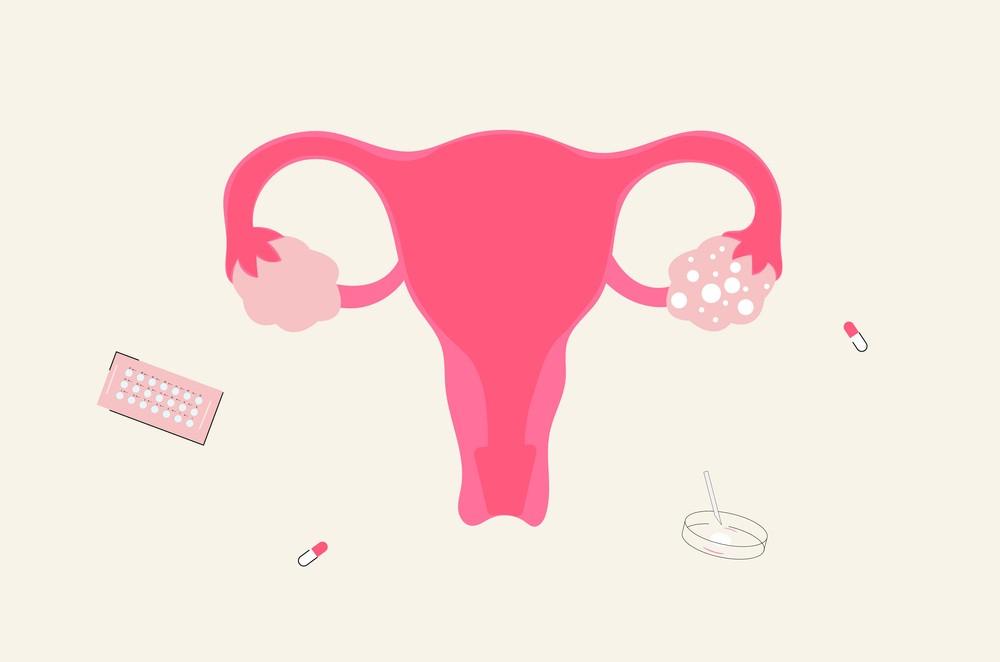
7 minute read
Paromita Debnath, semester II
An overview of Esophageal Cancer
Paromita Debnath, semester II
Advertisement
Esophageal cancer is one of the eight most common cancer world wide with 572,000 new cases estimated in 2018 and the sixth most common cause of death from cancer with 508,600 deaths. More than 80% of Esophageal cancer cases and deaths occur in developing countries and approximately 80-90% are squamous cell carcinomas in the highincidence regions.
The incidence rates of Esophageal cancer vary internationally 10 times in men (Age standardized incidence rate (ASR)) 17.9 per 100,000 in Eastern Asia compared to 1.6 in Western Africa) and almost 15 times in women (ASR 7.1 per 100,000 in Eastern Africa compared to 0.46 in Central America).
The esophagus is a long muscular tube that runs from the Throat to the stomach. The esophagus is made up of several layers of muscle that contract to help move food down the tube and into the stomach. A special muscle called that the Esophageal sphincter acts as a valve, opening to allow food and liquids to pass form the esophagus into stomach. Esophagus is clinically divided into four segments cervical esophagus, upper thoracic esophagus, middle thoracic esophagus, lower thoracic esophagus/GEJ.
Esophageal cancer results when abnormal cells grow out of control in esophageal tissue. Eventually the cells form a mass called a tumour.
To recognize that the esophagus is lined by columnar epithelial, endoscopists first must identify the GEJ. GEJ is the line at which the esophagus ends and the stomach begins. Practically there are no universally accepted and clearly reproducible landmarks that identify the GEJ with great precision.
Types of Esophageal cancer
There are two main types of Esophageal cancer:
Squamous Cell Carcinoma ( SCC)
• It develops in the squamous cell • Squamous Cell Carcinoma can occur in any portion of the esophagus but is most common in the middle third • Superficial Esophageal cancer appear as pink tan or gray white of mucosa • Advanced Esophageal cancer grow obstruct the lumen • This type of cancer often begins like plaques or small out growths
Adenocarcinoma
• It forms in the glandular tissue, which lines certain internal organs and makes and releases substances in the body • It affects the lower 1/3 part of esophagus • Many cases occur due to Barrett’s esophagus
Risk factors
Squamous Cell Carcinoma (SCC)
Smoking and alcohol
The main risk factors for Esophageal Squmaous Cell Carcinoma are tobacco smoking and alcohol consumption, which in individual studies have been found to account for 75-90% cases.
After alcohol consumption most of the alcohols are converted into acetaldehyde by the process of alcohol dehydrogenase in the liver. Acetaldehyde is so poisonous. In 2007, it was classified by the WHO as a group-1 carcinogen. There is an enzyme, aldehyde dehydrogenase 2, in our body. Acetaldehyde is converted by ALDH2 into acetic acid which is not harmful to the cells. ALDH2 deficiency a lot of acetaldehyde which is category 1 carcinogen will accumulate in our body. Patients with inactive ALDH2 in whom facial flushing is usually observed after drinking of alcohol, are at high risk for ESCC as well as multiple UADT cancers.
After smoking the concentration of acetaldehyde produced from tobacco burning is 7 times higher in our saliva. Acetaldehyde is a highly reactive, DNA damaging metabolite, causes interstrand cross linking in DNA which is a dangerous kind of DNA damage. As a result, it obstructs cells division and protein products. Ultimately accumulation of ICl damage may lead to cell death and cancer.
Human Papillomavirus (HPV)
Human Papillomavirus is a common virus which can effect males and females of all age. It spread through skin to skin contact with an infected person, usually during sexual contact. HPV can cause cancer in anus, mouth, throat, esophagus in both genders.
HPV causes cancer after it infects cells in these areas. Over time, the infection can cause precancerous changes in the cells, which can eventually lead them to mutate into cancer cells. This happens over a number of years.
Drinking hot tea or coffee
A tea drinkers who like their tea to be warmer than 60°C are at a higher risk of developing Esophageal cancer. Most people prefer hot or warm food to feel warm and energetic.
Any type of hot food or liquids has the potential to irritate the lining of the Throat and esophagus. It's the temperature which is the biggest risk factor. This hot liquids or food can cause a thermal injury in the lining of the throat of esophagus. This thermal injuries can lead to chronic inflammation and the formation of cancer cells.
The ideal temperature is the body temperature which is about 37 °C. If the temperature is above that it will damage cells. The cells are designed to survive within the body temperature.
Adenocarcinoma
Gastro Esophageal Reflux
Gastroesophageal reflux disease occurs when stomach acid frequently flows back into the esophagus. This backwash or acid reflux can irritate the lining of our esophagus. The flat thin cells lining the esophagus are called squamous cells. Below this surface it divides to make new squamous cells as the old ones were out.

If a man have a condition of Gastro Esophageal Reflux, frequently there occurs a back flow or reflux of acid from stomach into esophagus. Over time gut may cause the squamous cells lining lower esophagus to be replaced with gland cells that makes mucus called goblet cells. This change in the lining of esophagus is a condition called Barrett’s Esophagus.
One type of Esophageal cancer called Adenocarcinoma may occur in the change lining of Barrett’s Esophagus. Another type of Esophageal cancer called squamous cells Carcinoma occurs in the squamous cells in the esophagus.
Obesity
Being overweight is the biggest factor associated with GERD. If a person is obese, he is nearly three times more likely than people of a normal weight to develop acid reflux. Being overweight may cause extra uncomfortable symptoms.
The body weight increases pressure of abdomen. The extra fat around the belly squeezes stomach so more fluid travels upward into esophagus. That's why GERD occurs. Thus obesity is also linked with the risk of Esophageal Adenocarcinoma.

Cholecystectomy
Cholecystectomy is the surgical removal of the gallbladder. It is a common treatment of symptomatic gallstones and other gallbladder conditions. After cholecystectomy the increased risk of Esophageal cancer is through bile reflux.
Bile the fluid, our small intestine uses to digest food , is produced by the liver and flows into the duodenum or the upper part of small intestine. It normally can't backup into the stomach because of a one way valve called pylorus but after cholecystectomy once the gallbladder is removed bile may overflow directly into the stomach. The serious condition may occur when long term exposure to stomach acid damages tissue in the lower esophagus. The damaged Esophageal cells have an increased risk of becoming cancerous.
Symptoms
• Progressive dysphagia - The most common symptom of Esophageal cancer is a problem of swallowing. Esophageal cancer causes dysphagia by narrowing the Esophageal lumen. Such narrowing generally do not restrict the passage of liquids and consequently these diseases characteristically cause dysphagia only for solid foods. Dysphagia for both solids and liquids is known as progressive dysphagia. • Odynophagia - One of the symptoms of esophageal cancer is odyuophagia or the trouble of swallowing, it is a feeling of food stuck in the throat.
Swallowing may become painful if the cancer is large enough to limit the passage of food through the esophagus. In those diseases, dysphagia also may be present, but pain is the dominant complaint. • Regurgitation - It is the spitting up of blood from the esophagus or stomach without nausea or forceful contractions of the abdominal muscles.
A ring shaped muscle between the stomach and esophagus normally helps prevent regurgitation. Regurgitation of tasteless fluid containing mucus or undigested food can result from narrowing or a blockage of the esophagus. Page 56
• Hematemesis – It is an uncommon symptom of esophageal cancer. Hema means blood and Emesis means vomiting. Hematemesis is the medical terminology of vomiting blood with or without stomach contents. In this case the appearance of blood is in bright red colour. • Melena – This refers to black stools that occur as a result of Gastrointestinal bleeding. This bleeding typically originates from the upper GI tract which includes the mouth, esophagus and stomach. Symptoms that may be seen with melena vary depending on the amount of blood loss and the source of bleeding. Significant blood loss can lead to symptoms of low blood volume, anaemia, or shock, such as weakness, shortness of breath, pale skin, clamminess, dizziness, confusion, and tachycardia or a fast heart rate. • Weight loss - Roughly 50 percent of people with esophageal cancer experience unexplained weight loss. This can be due to eating less due to swallowing problems, or a decreased appetite due to the cancer.
Diagnosis
➢ CT scan, PET scan ➢ Barium swallow ➢ Endoscopy with biopsy
Treatment
✔ Chemotherapy ✔ Radiation therapy ✔ Esophagectomy ✔ Esophagogastrectomy
References:
• Esophageal Cancer and Barrett’s Esophagus (3rd Edition ) by Prateek Sharma et al. • Esophageal Squmaous Cell Carcinoma diagnosis and treatment (2nd Edition) by Nobutoshi Ando







